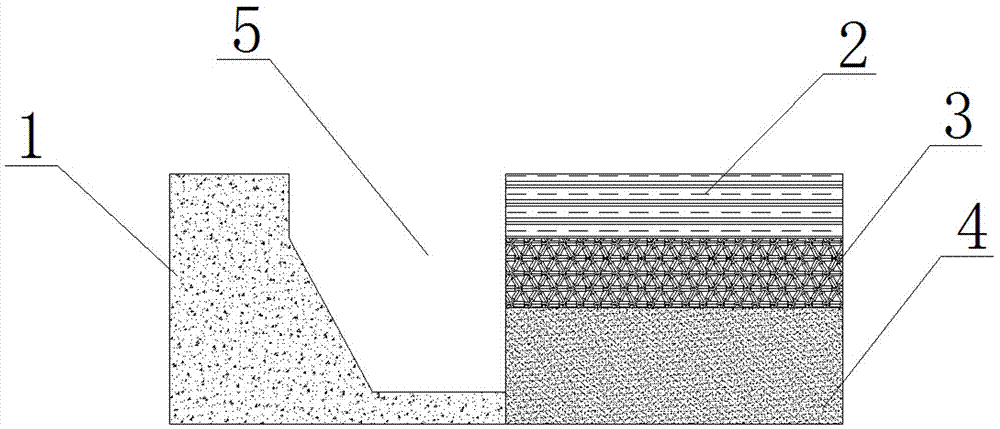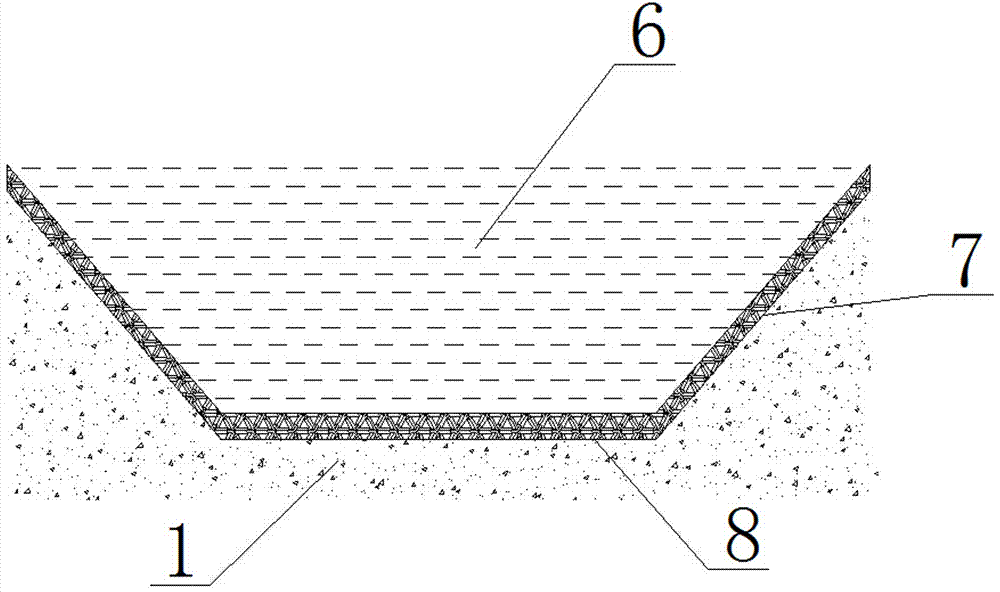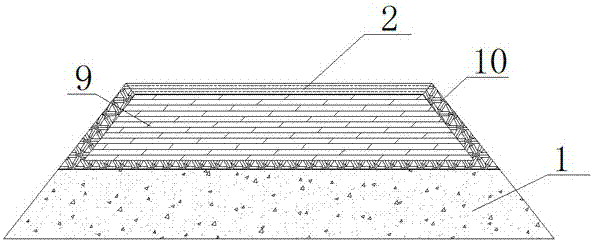A kind of water-resistance soil stabilizer and its preparation method and application
A soil stabilizer and anti-soiling force technology, applied in the field of anti-soiling force soil stabilizer and its preparation, can solve problems such as limited effect, achieve the effects of no aging period, prevent seepage, and simple construction procedures
- Summary
- Abstract
- Description
- Claims
- Application Information
AI Technical Summary
Problems solved by technology
Method used
Image
Examples
Embodiment 1
[0037] The specific method for obtaining the soil stabilizer with anti-soiling force, as the following steps, expressed in parts by weight,
[0038] (1) Put 20 parts of 95% ethanol solution into the container;
[0039] (2) Then slowly pour 3 parts of oleic acid amide and 6 parts of triisopropanolamine into the container, and slowly stir;
[0040] (3) After mixing evenly, add the mixed solution into the reaction kettle, and then add 10 parts of pure water and 5 parts of carbolic acid into the reaction kettle to make them react;
[0041] (4) After all the substances are completely dissolved, and there is no precipitation and suspended solids after inspection, they are bottled and put into storage.
[0042] Among them, the PH value of the anti-soiling soil stabilizer is 6~8.
Embodiment 2
[0044] The application of anti-soiling soil stabilizers in roads, such as figure 1As shown, add water-resistant soil stabilizer at a ratio of 1:100 to dilute it into a soil-resistant stabilizer (working fluid), and then spray the soil-resistant stabilizer (working fluid) on the plowed roadbed , Open to traffic immediately after the four processes of mixing, shaping, leveling and compacting. The subgrade reinforced with anti-slip soil stabilizer does not need to be maintained, and it can be opened to traffic even if it is hit by a heavy rain immediately after rolling, and the driving will not slip or rut. After the anti-flooding reinforcement layer is rolled by driving, when the test data meets the design data requirements, the anti-flooding force base layer is paved on the anti-flooding force reinforcement layer. The process is as follows: the first step is to gather the specification materials used in the anti-slip base to the site, and use a loader, special mixing equipment...
Embodiment 3
[0047] In this embodiment, on the basis of the above-mentioned embodiments, the ratio of the anti-slip soil stabilizer can be adjusted according to the content of clay in the treated soil, so as to be applied to water conservancy anti-seepage. like figure 2 As shown, the anti-drainage soil stabilizer (working fluid) is mixed into the natural soil, and the anti-drainage engineering soil is obtained by mixing. Water resistance and anti-seepage bottom layer 8, (thickness ≥ 80mm≦150mm) anti-water and anti-seepage slope protection 7 and water storage 6 in the anti-water and anti-seepage bottom layer 8. Construct the corresponding structure with the upper part of the anti-seepage bottom layer 8, so that it has corresponding functions.
[0048] Use the site soil and anti-slip soil stabilizer to mix, form an anti-seepage body by physical means, prevent water penetration, and reduce the K-value of the site soil to 1×10 ﹣9 to 1×10 ﹣10 , and make it irreversible.
PUM
| Property | Measurement | Unit |
|---|---|---|
| thickness | aaaaa | aaaaa |
Abstract
Description
Claims
Application Information
 Login to View More
Login to View More - R&D
- Intellectual Property
- Life Sciences
- Materials
- Tech Scout
- Unparalleled Data Quality
- Higher Quality Content
- 60% Fewer Hallucinations
Browse by: Latest US Patents, China's latest patents, Technical Efficacy Thesaurus, Application Domain, Technology Topic, Popular Technical Reports.
© 2025 PatSnap. All rights reserved.Legal|Privacy policy|Modern Slavery Act Transparency Statement|Sitemap|About US| Contact US: help@patsnap.com



